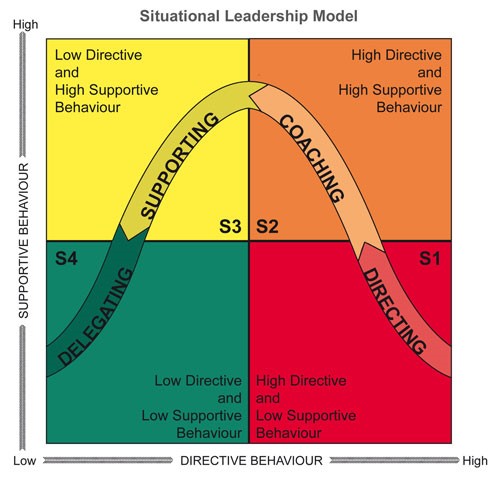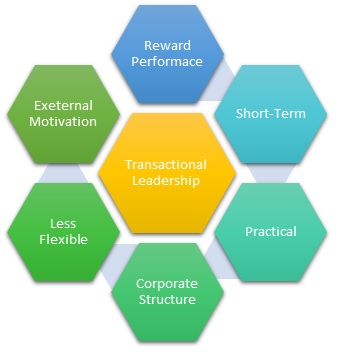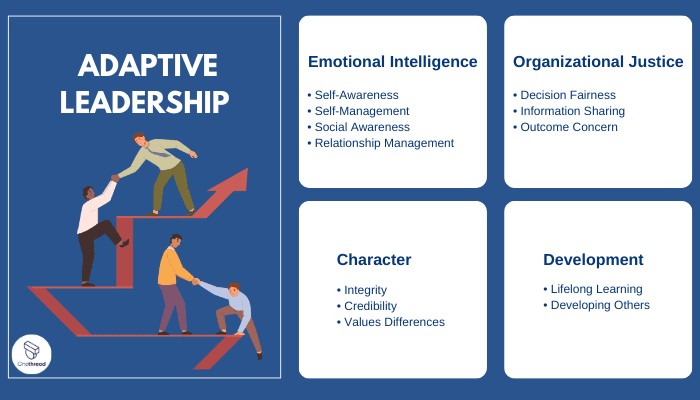Leadership Styles in Modern Organizations
 |
| Figure 01 - https://www.theitbase.com/general/leadership-case-study/ |
Introduction
In today's commercial environment, leadership styles have a critical role in influencing organizational culture, boosting productivity, and encouraging creativity. Effective leadership is necessary to manage people and get through the complexity of today's businesses. The importance of leadership styles will be discussed in detail, and an outline of contemporary organizational structures will be given.
Importance of Leadership Styles
Within a business, employee behavior, motivation, and engagement are significantly influenced by the leadership styles that are used. The efficacy of a company as a whole, team relationships, and decision-making procedures can all be affected differently by different leadership philosophies (Northouse, 2018). Through the comprehension and application of suitable leadership approaches, leaders can stimulate self-assurance, foster cooperation, and advance strategic coherence among their groups.
Overview of Modern Organizations
Dynamic work environments, quick technological progress, and a diversified workforce are hallmarks of modern corporations. These businesses compete in fiercely competitive sectors where survival depends on flexibility, inventiveness, and adaptability (Daft, 2019). In addition, decentralized decision-making, cross-functional cooperation, and employee empowerment are frequently prioritized in contemporary organizational structures to promote innovation and accelerate development.
| Figure 02 - https://www.quora.com/What-is-the-difference-between-a-traditional-structure-and-an-organizational-structure |
Traditional Leadership Styles
For many years, traditional leadership philosophies have dominated organizational environments, influencing how leaders engage with their teams and reach choices. Historical conventions and hierarchical organizational systems are frequently reflected in these styles. Three well-known traditional leadership philosophies—autocratic, democratic, and laissez-faire—will be discussed in this section.
Autocratic Leadership:
Centralized decision-making authority possessed by the leader is a hallmark of autocratic leadership, sometimes referred to as authoritarian leadership. This leadership style involves the leader making choices without seeking input from the team and enforcing tight control over work procedures (Bass & Bass, 2008). Autocratic leadership can help with speedy decision-making and direction clarity, but it can also hinder creativity, demoralize workers, and cause a lack of ownership among team members.
Democratic Leadership:
Laissez-Faire Leadership:
Laissez-faire leadership, which translates from French as "let it be," is defined by a laissez-faire attitude in which team members get little direction and oversight from leaders. Rather, they provide employees the independence and liberty to decide for themselves and to handle their work as they see fit (Daft, 2019). Laissez-faire management styles can encourage initiative and a sense of ownership in workers, but if they are not well controlled, they can also result in confusion, a lack of focus, and even inefficiencies.
Transformational Leadership
Transactional leadership plays a significant role in performance management by providing a structured framework for setting goals, monitoring progress, and rewarding achievement. Transactional leaders use contingent rewards, such as bonuses or recognition, to incentivize performance and ensure accountability (Judge & Piccolo, 2004). They establish clear performance metrics and hold employees accountable for meeting targets, contributing to organizational effectiveness and productivity.
Limitations and Criticisms:
Transactional leadership is not without its drawbacks and restrictions, even in situations where it works well. One critique is that it relies too much on extrinsic rewards, which might boost compliance in the short term but reduce employee engagement and innovation over the long run (Avolio et al., 2004). Additionally, transactional leadership has the potential to foster an organizational culture that is bureaucratic and hierarchical, which can stifle creativity and adaptation in quickly evolving contexts.
Its transactional character, which could erode intrinsic motivation and lower staff morale, is another point of criticism (Burns, 1978). Transactional leaders risk undervaluing the emotional and relational components of leadership by concentrating only on incentives and penalties. This can cause followers to become less dependable and committed.
Notwithstanding these objections, transactional leadership has its place in some organizational settings, especially stable ones where accomplishing goals necessitates the use of defined procedures and performance standards. Leaders must, however, be aware of its limitations and modify their strategy to fit the demands of their environments and teams.
Servant Leadership
Application in Modern Organizations:
Modern firms that respect ethical leadership, sustainable business methods, and employee empowerment can benefit from the use of servant leadership. According to Spears and Lawrence (2004), servant leaders foster inclusive, encouraging work cultures where staff members feel appreciated, respected, and inspired to give their all. They foster a culture of trust, cooperation, and common purpose by placing a high value on listening, empathy, and compassion.
Benefits and Challenges:
Employers can gain a lot from implementing servant leadership, including higher levels of commitment, contentment, and engagement from their workforce (Liden et al., 2008). Higher levels of motivation, inventiveness, and organizational success are attained by followers of servant leaders who provide them a feeling of community and purpose. In addition, servant leadership enhances an organization's competitive edge and reputation by fostering moral behavior, social responsibility, and long-term sustainability.
But there are drawbacks to servant leadership as well, like the requirement for leaders to have selflessness, humility, and patience (van Dierendonck, 2011). People used to more conventional leadership philosophies may be resistant to or skeptical of servant leaders, therefore continual education and communication are necessary to foster acceptance and understanding. Additionally, in settings that place a premium on hierarchical structures or immediate outcomes, the servant leadership style could be seen as lethargic or ineffective.
Despite these obstacles, servant leadership provides an effective framework for promoting cooperation, trust, and organizational performance in the complicated and linked world of today. Adhering to the tenets of servant leadership enables leaders to effect sustainable change both inside and outside of their businesses.
Adaptive Leadership
Adaptive Leadership in Practice:
Nelson Mandela's tenure as president of South Africa serves as one real-world illustration of adaptable leadership. Leading a country split by racial tensions and apartheid was a difficult challenge for Mandela. Despite strong opposition and difficulties, he demonstrated adaptive leadership by encouraging unity, forgiveness, and reconciliation (Mandela, 1994). Mandela was instrumental in guiding South Africa through a peaceful transition to democracy because of his capacity to modify his leadership style in response to the changing demands of his nation.
Satya Nadella, the CEO of Microsoft, is another such. To adjust Microsoft's culture to the quickly evolving technological world, Nadella adopted adaptive leadership (Nadella, 2017). Under his direction, Microsoft moved its emphasis to artificial intelligence and cloud computing, which promoted growth, innovation, and agility.
Situational Leadership
 |
| Figure 07 - https://www.selfawareness.org.uk/2022/10/22/situational-leadership-and-developing-great-teams/ |
A dynamic method known as "situational leadership" highlights the significance of customizing leadership philosophies to the unique requirements and environments of followers. This section will address situational leadership as a concept and framework, match leadership styles to situations, and provide some real-world examples and considerations.
Concept and Framework:
Hersey and Blanchard (1969) established situational leadership, which holds that followers' readiness or maturity to complete a task is a prerequisite for effective leadership (Hersey & Blanchard, 1977). According to the concept, leaders can use one of four styles of leadership: directing, coaching, supporting, or delegating, depending on the degree of skill and dedication exhibited by their followers. Recognizing that there is no one-size-fits-all method of leadership, situational leadership places a strong emphasis on adaptation and flexibility.
Matching Leadership Styles to Situations:
Situational leadership is determining the followers' readiness and adjusting the leadership style accordingly. For instance, a directing style that offers explicit instructions and supervision may be most appropriate when followers exhibit low levels of competence and commitment (Blanchard et al., 1985). Leaders can progressively shift to a coaching or supporting style, providing advice and assistance as needed, as followers acquire competence and confidence. In the end, leaders want to give followers authority and assign tasks when they exhibit a high degree of skill and dedication.
Practical Applications and Considerations:
In real-world scenarios, situational leaders must gauge their followers' readiness and modify their style of leadership accordingly. To encourage the growth and development of followers, this may entail continual communication, feedback, and development initiatives (Northouse, 2018). Additionally, situational leadership calls for leaders to be adaptable and receptive, modifying their approach in response to shifting conditions and unique requirements.
Leaders must also be aware of potential hazards, such as putting too much stock in a favored style of leadership or ignoring the particular requirements of each follower. Strong communication abilities, a thorough awareness of follower dynamics, and a dedication to fostering others' development are necessary for situational leadership success.
By providing a useful framework, situational leadership enables leaders to customize their strategy to the unique requirements and skills of their followers, thereby enhancing both individual and organizational performance. A flexible and adaptive leadership style enables leaders to traverse a variety of scenarios with effectiveness and to empower their teams to accomplish common objectives.




The situational Leadership model is very important for doing top management activities in the business.
ReplyDeletethank you for the review
DeleteA good leader can either motivate or demotivate a team, it would beneficial for companies to see the pain point from an employee's perspective. Interesting topic to discuss!
ReplyDelete